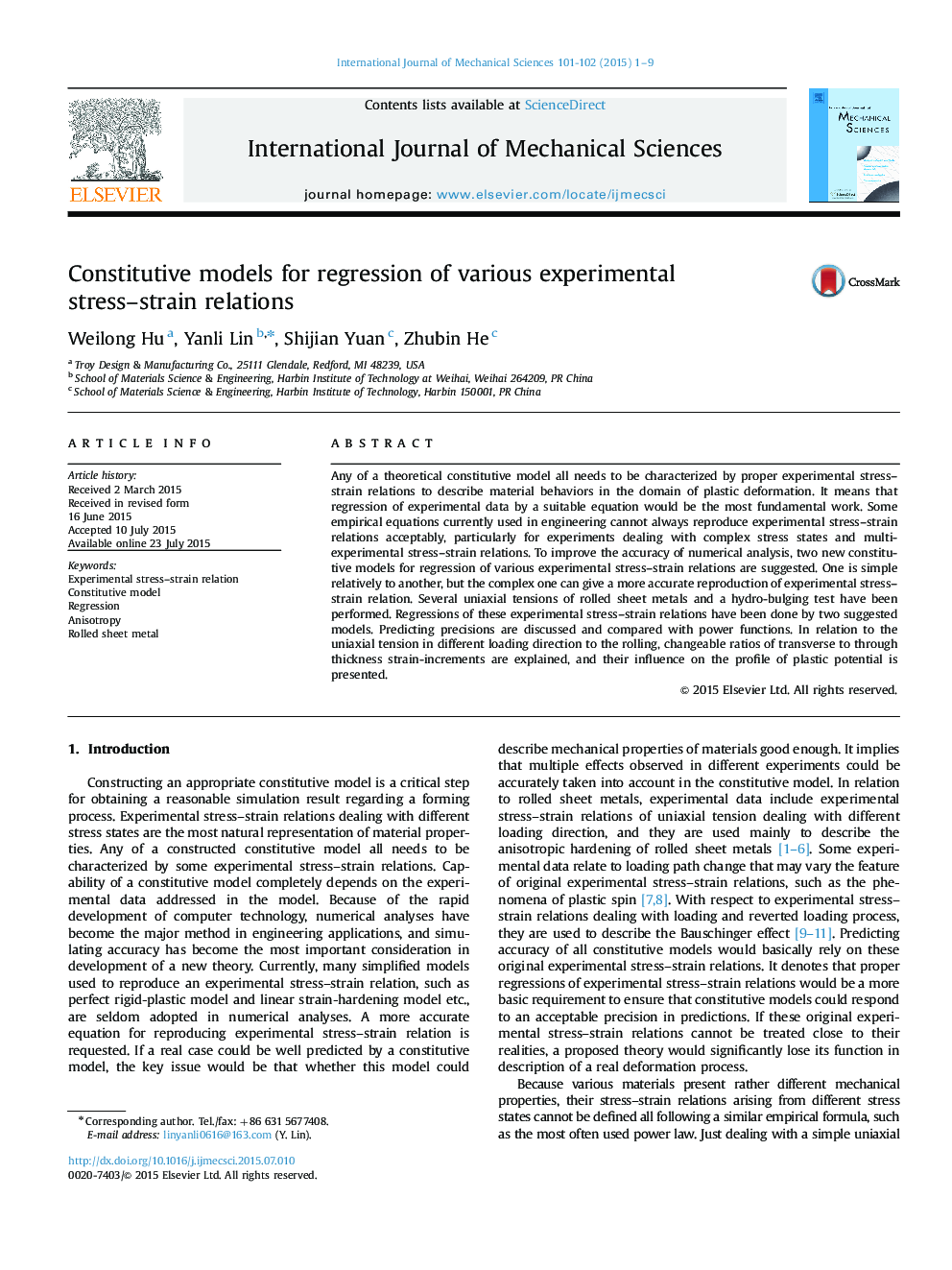| Article ID | Journal | Published Year | Pages | File Type |
|---|---|---|---|---|
| 783311 | International Journal of Mechanical Sciences | 2015 | 9 Pages |
•Two models are used for regression of experimental stress–strain relations.•Experimental data include complex stress state and multi-stress-strain relations.•Changeable anisotropic parameters of rolled sheet metals can be expressed.•Use of proposed model can significantly improve the spring-back prediction.
Any of a theoretical constitutive model all needs to be characterized by proper experimental stress–strain relations to describe material behaviors in the domain of plastic deformation. It means that regression of experimental data by a suitable equation would be the most fundamental work. Some empirical equations currently used in engineering cannot always reproduce experimental stress–strain relations acceptably, particularly for experiments dealing with complex stress states and multi-experimental stress–strain relations. To improve the accuracy of numerical analysis, two new constitutive models for regression of various experimental stress–strain relations are suggested. One is simple relatively to another, but the complex one can give a more accurate reproduction of experimental stress–strain relation. Several uniaxial tensions of rolled sheet metals and a hydro-bulging test have been performed. Regressions of these experimental stress–strain relations have been done by two suggested models. Predicting precisions are discussed and compared with power functions. In relation to the uniaxial tension in different loading direction to the rolling, changeable ratios of transverse to through thickness strain-increments are explained, and their influence on the profile of plastic potential is presented.
